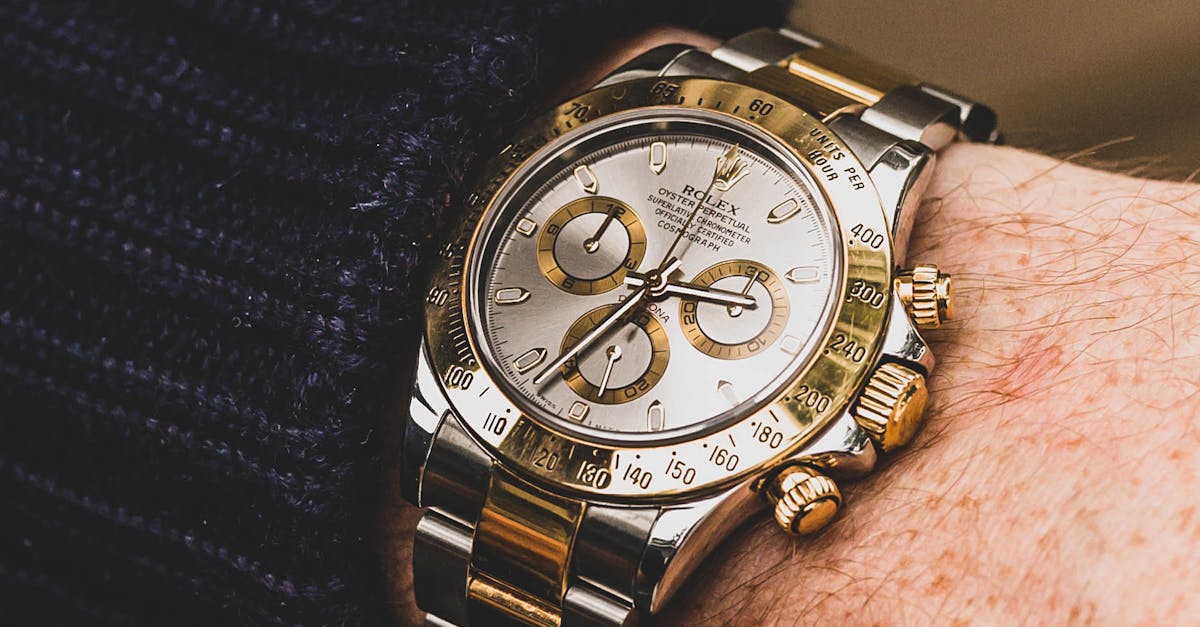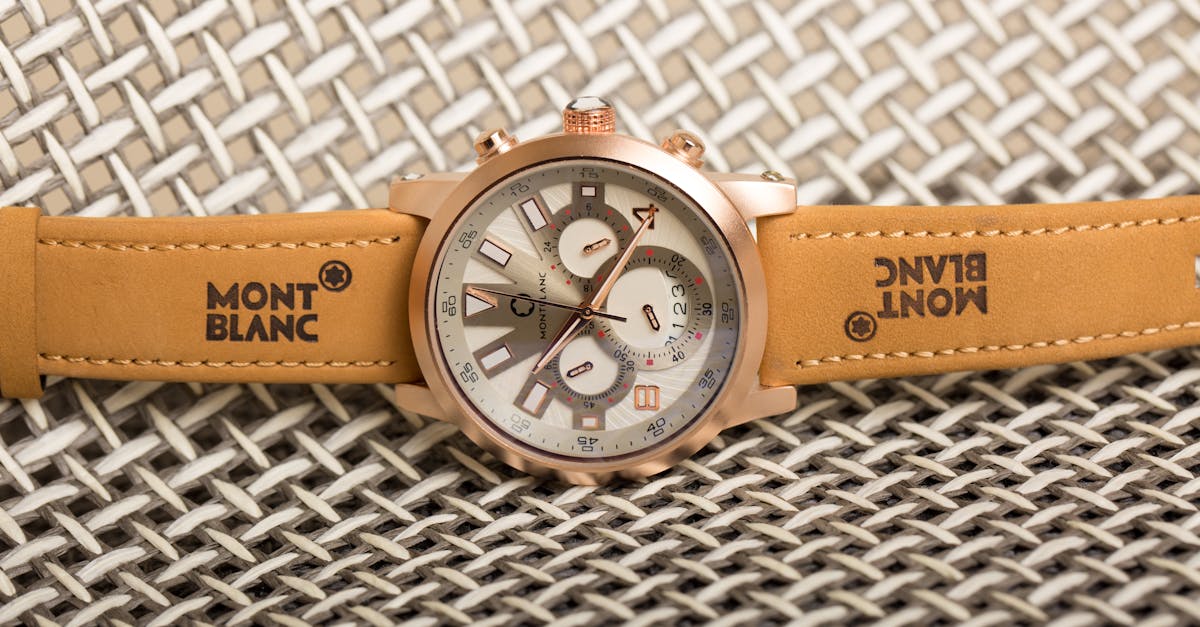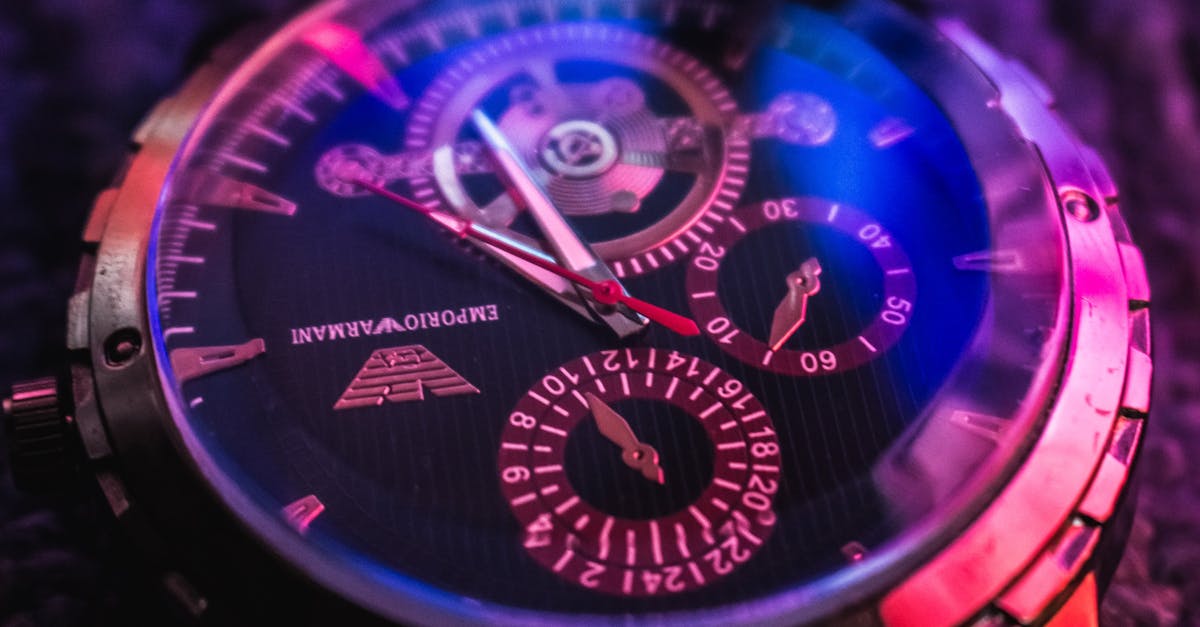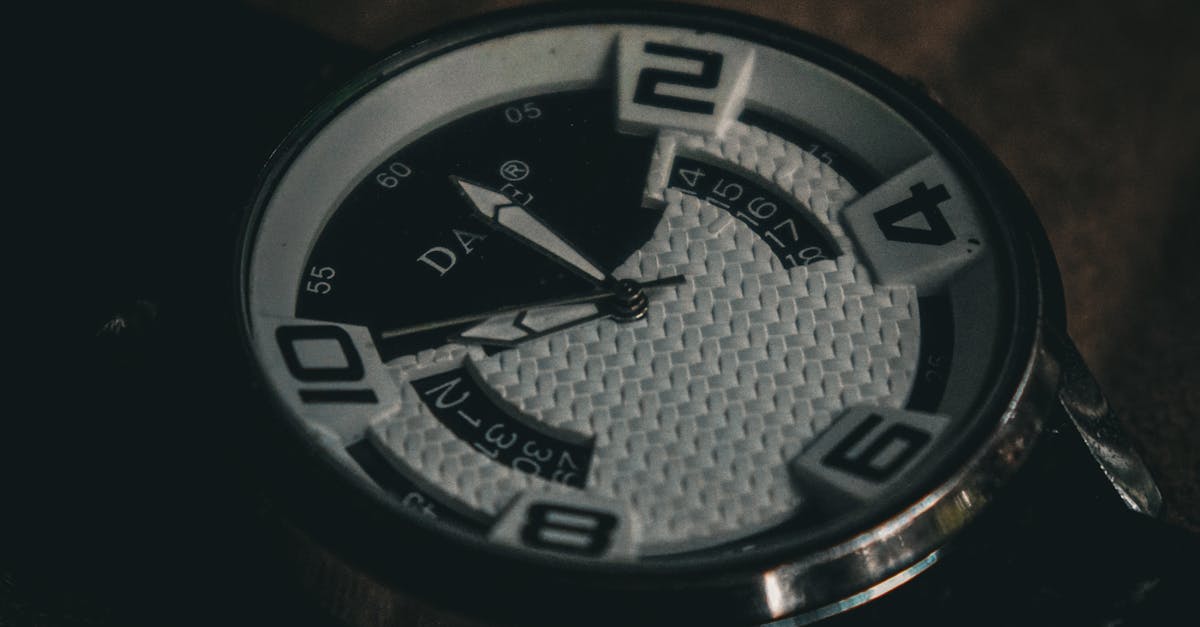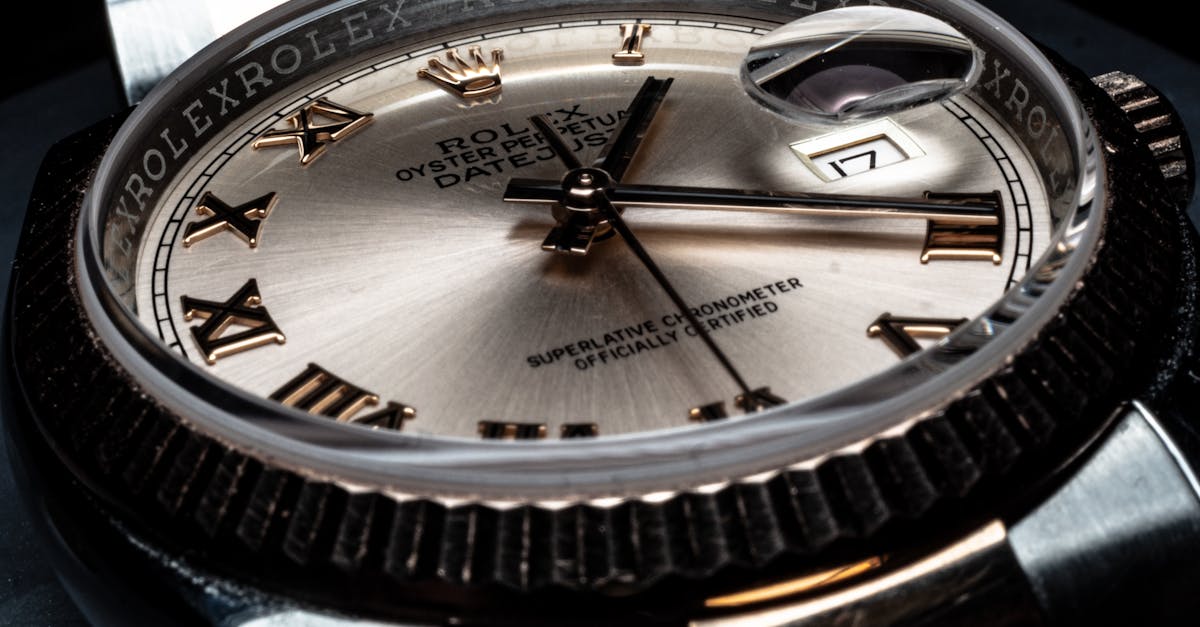Unveiling the Secrets of Chronograph Watches: A Timeless Journey into Precision

Chronograph Watches: Precision Timekeeping at Your Fingertips
Chronograph watches are more than just timepieces. They’re precision instruments that have revolutionized the way we measure time. From the racetrack to the operating room, chronographs have become indispensable tools for those who need to track elapsed time with pinpoint accuracy. In this comprehensive guide, we’ll take you on a journey through the fascinating world of chronograph watches. We’ll explore their history, anatomy, and practical applications, and provide tips on how to use them effectively. Get ready to discover the secrets of these remarkable timekeepers!
Prepare to be mesmerized by the intricate workings of a chronograph. Under the hood, you’ll find an array of components, including pushers, dials, and scales, each playing a vital role in the precise measurement of time. We’ll delve into the mechanics of these components, explaining how they work together to create a symphony of timekeeping precision.
1. Unveiling the Chronograph: A Timeless Masterpiece
Unveiling the Chronograph: A Timeless Masterpiece
The chronograph, a remarkable invention that has revolutionized timekeeping, traces its origins back to the 19th century. In 1816, Louis Moinet, a French watchmaker, created the first chronograph, a device that could measure time intervals down to a fifth of a second. This invention marked a significant breakthrough in precision timekeeping and paved the way for the development of modern chronographs.
Over the years, chronographs have undergone continuous refinement and innovation. In 1844, Adolphe Nicole invented the first chronograph with a central seconds hand, making it easier to read elapsed time. In 1862, Louis Favre-Brandt developed the first chronograph with a reset-to-zero function, further enhancing its practicality. These advancements laid the groundwork for the chronographs we know and use today.
Chronographs have gained enduring popularity due to their versatility and precision. They find applications in a wide range of fields, including sports, science, medicine, and aviation. Athletes use chronographs to measure their performance, while scientists rely on them for precise timing of experiments. In the medical field, chronographs are used to monitor heart rate and other vital signs. Pilots and navigators use chronographs to calculate flight times and distances.
2. Exploring the Anatomy of a Chronograph
Exploring the Anatomy of a Chronograph
Chronographs are intricate timepieces with a range of components that work together to provide precise timekeeping. Let’s delve into the anatomy of a typical chronograph and understand the functions of its key elements:
Pushers: Chronographs usually have two or more pushers, which are buttons located on the side of the watch case. The top pusher is typically used to start and stop the chronograph function, while the bottom pusher is used to reset the hands to zero. Some chronographs may have additional pushers for controlling other functions, such as lap timing or flyback.
Dials: Chronographs often feature multiple dials in addition to the main watch dial. These dials, known as sub-dials, serve specific purposes. One common sub-dial is the seconds dial, which tracks the running seconds when the chronograph is activated. Other sub-dials can measure elapsed minutes, hours, or even tenths of a second, depending on the watch’s functionality.
Scales: Chronographs may also have scales printed around the edge of the watch face or on the sub-dials. These scales allow you to perform calculations based on the elapsed time. For example, a tachymeter scale can be used to calculate speed based on the time it takes to travel a known distance. A telemeter scale can be used to calculate the distance to an object based on the time it takes to hear a sound.
3. Unleashing the Power: Measuring Time with Precision
Unleashing the Power: Measuring Time with Precision
Chronographs are not just timekeepers; they are precision instruments that enable us to measure elapsed time with incredible accuracy. Their versatility makes them indispensable tools in various fields, from sports to science:
Sports: Chronographs are a staple in the world of sports, allowing athletes, coaches, and referees to measure performance and track progress. Runners use chronographs to time their laps and monitor their pace, while swimmers use them to track their splits and improve their technique. In team sports like basketball and soccer, chronographs help coaches analyze game time and make informed decisions.
Science: In scientific research and experiments, precise timing is crucial. Chronographs allow scientists to accurately measure reaction times, intervals between events, and the duration of specific processes. They are used in fields such as biology, chemistry, and physics, where precise timing can lead to groundbreaking discoveries.
Everyday Use: Beyond sports and science, chronographs have practical applications in everyday life. They can be used to time cooking, brewing coffee, or monitoring parking meters. Some chronographs even come with specialized scales, such as tachymeters and telemeters, which allow for quick calculations of speed and distance.
Capturing the Essence: The Flyback Function
Capturing the Essence: The Flyback Function
The flyback function is a remarkable feature found on certain chronographs that allows for instantaneous resetting and restarting of the stopwatch. This feature is particularly useful in dynamic situations where you need to quickly measure multiple intervals without losing any time. Here’s how the flyback function works:
When you activate the flyback function, the chronograph hands instantly reset to zero and simultaneously start running again. This eliminates the need to stop, reset, and then restart the chronograph, saving you precious seconds. The flyback function is often used in sports timing and other applications where precise and rapid timing is essential.
For example, in motor racing, the flyback function allows race officials to quickly reset the chronograph and start timing the next lap with a single press of a button. Similarly, in scientific experiments, the flyback function enables researchers to quickly reset and restart the chronograph to measure multiple intervals in a continuous sequence.
4. Beyond Timekeeping: The Versatility of Chronographs
Beyond Timekeeping: The Versatility of Chronographs
While chronographs are primarily known for their timekeeping abilities, their versatility extends far beyond that. They have become indispensable tools in fields where precise timing is crucial, such as aviation, medicine, and automotive racing:
Aviation: In the world of aviation, chronographs are essential for pilots and navigators. They use chronographs to calculate flight times, monitor fuel consumption, and synchronize their watches with ground control. The ability to measure elapsed time accurately is vital for ensuring flight safety and efficiency.
Medicine: In the medical field, chronographs are used for a variety of purposes, including monitoring heart rate, measuring the duration of surgical procedures, and tracking the progress of medical treatments. The precise timing capabilities of chronographs allow healthcare professionals to make informed decisions and provide optimal care for their patients.
Automotive Racing: Chronographs are also widely used in automotive racing, where every second counts. Race car drivers rely on chronographs to measure lap times, monitor their speed, and fine-tune their performance. The ability to track elapsed time with precision helps drivers optimize their racing strategies and push their limits.
5. Mastering the Chronograph: Tips for Effective Use
Mastering the Chronograph: Tips for Effective Use
To get the most out of your chronograph, it’s important to know how to use it properly. Here are a few tips to ensure accurate and reliable measurements:
Starting the Chronograph: To start the chronograph, simply press the top pusher. The chronograph hands will start moving, and the sub-dials will begin to record the elapsed time.
Stopping the Chronograph: When you want to stop the chronograph, press the top pusher again. The hands will stop moving, and the sub-dials will display the elapsed time.
Resetting the Chronograph: To reset the chronograph, press the bottom pusher. The hands will instantly return to zero, and the sub-dials will reset. It’s important to note that some chronographs have a flyback function, which allows you to reset the chronograph and start it again with a single press of the bottom pusher.
6. Exploring the Timeless Legacy: Iconic Chronograph Models
Exploring the Timeless Legacy: Iconic Chronograph Models
Throughout the history of horology, certain chronograph models have left an indelible mark, becoming iconic symbols of precision, innovation, and style. Here are a few notable examples:
Rolex Daytona: Introduced in 1963, the Rolex Daytona was designed specifically for professional race car drivers. It features a tachymeter scale on the bezel, which allows drivers to calculate their speed based on the time it takes to travel a known distance. The Daytona has become a legendary timepiece, synonymous with the world of motorsport.
Omega Speedmaster: Known as the “Moonwatch,” the Omega Speedmaster was the first watch to be worn on the moon during the Apollo 11 mission in 1969. It is renowned for its robust construction and precise timekeeping abilities, making it a favorite among astronauts and space enthusiasts alike.
Breitling Navitimer: Originally developed in 1952 for pilots, the Breitling Navitimer is a highly functional chronograph with a slide rule bezel. This bezel allows pilots to perform complex calculations, such as fuel consumption and flight time. The Navitimer has become a staple in the world of aviation and is prized by pilots and collectors alike.
The Enduring Classic: Rolex Daytona
The Enduring Classic: Rolex Daytona
Among the pantheon of iconic chronographs, the Rolex Daytona stands as a true legend. Renowned for its precision, durability, and timeless design, the Daytona has become synonymous with the world of motorsports and is highly sought after by collectors worldwide.
Introduced in 1963, the Daytona was specifically designed to meet the demands of professional race car drivers. Its most distinctive feature is the tachymeter scale engraved on the bezel, which allows drivers to calculate their speed based on the time it takes to travel a known distance. The Daytona’s robust construction and precise timekeeping capabilities quickly made it a favorite among drivers and enthusiasts alike.
Over the years, the Daytona has forged an unbreakable bond with the world of motorsports. It has been the official timekeeper for the 24 Hours of Daytona race since 1962 and has become a symbol of speed, precision, and excellence. The Daytona’s association with motorsports has also made it a highly desirable collector’s item, with certain models fetching staggering prices at auctions.
Quiz: Test Your Chronograph Knowledge
- Which of the following is NOT a component of a chronograph?
(a) Pushers (b) Dial (c) Bezel (d) Crown
-
True or False: The flyback function allows you to reset and restart the chronograph with a single press of a button.
-
Which field of work commonly uses chronographs to monitor heart rate and measure the duration of surgical procedures?
(a) Aviation (b) Medicine (c) Automotive racing (d) None of the above
- Which iconic chronograph model is known as the “Moonwatch” due to its association with the Apollo 11 mission?
(a) Rolex Daytona (b) Omega Speedmaster (c) Breitling Navitimer (d) Patek Philippe Nautilus
- What is the purpose of the tachymeter scale on a chronograph bezel?
(a) To measure speed based on distance and time (b) To calculate fuel consumption (c) To measure elapsed time (d) To perform complex mathematical calculations
- (d) Crown
- True
- (b) Medicine
- (b) Omega Speedmaster
- (a) To measure speed based on distance and time
